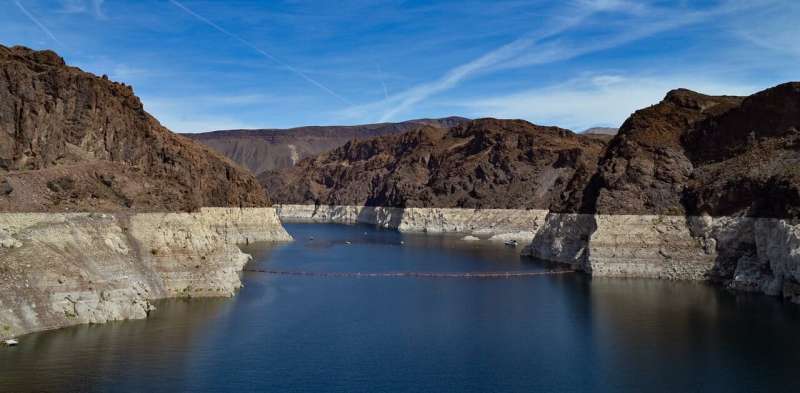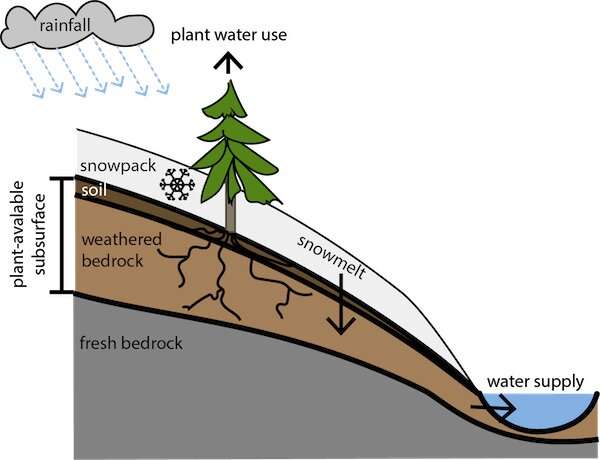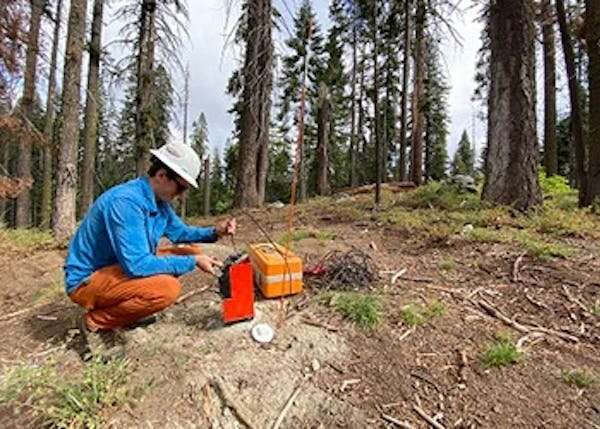Scientists dig deep and find a way to accurately predict snowmelt after droughts

Where does your water supply come from?
If you live near mountains, for instance in British Columbia, a lot of your water probably comes from mountain snowpack. Over 1.9 billion people globally rely on the snow melting and running off from these mountain snowpacks for their water supply.
Accurate predictions of this annual trend is critical for water supply planning. And forecasting models often rely on the historical relationship between mountain snowpack and the subsequent water supply.
However, in times of unprecedented drought and a changing climate, these forecasting models seem to no longer be reliable. Following an intense drought in California in 2021, snowmelt from mountain snowpack delivered significantly less water than historical models predicted, meaning that reservoirs remained drier than anticipated. For the first time in 100 years, water supply models were wrong.
In an attempt to address the gaps in the traditional model, we recently developed an updated water supply forecasting model that considers additional factors, like water storage deficits in the soil and bedrock. This new model significantly improves the accuracy of water supply forecasts following drought.
What are existing water supply models missing?
Models used for forecasting snowmelt typically consider winter rain and snowpack. But it turns out that water absorbed by the ground matters too. The amount of water absorbed into the soil and bedrock varies from year to year and is especially impacted by drought.
When snow melts or rain falls, almost all of it goes underground first before heading downstream to water supply systems . The water storage processes below the surface of the ground are key to understanding the ultimate fate of rain and snow in the mountains.
The below ground environment is made up of complex layers of soil, fractures and weathered bedrock that can store, detain and transport water. The details of these processes are complicated, but the overall effect can be likened to a giant sponge.

Over the summer, the ground dries out and it gets wet again with the arrival of rain and snowmelt in winter and spring. Once the ground is wet enough, it starts to drip. This dripping water enters the groundwater and streams and eventually goes into the water supply systems.
How much water drips depends on how much snowmelt and rain is received, which is included in forecasting models. It also depends on how dry the subsurface was to begin with, which is not traditionally included in forecasting models.
Plants use a lot of water
How dry the subsurface is this year can depend on how much water the plants used last year (or even over the last few years). In hotter, drier years, plants can use more water from underground, causing the subsurface to dry out more.
Recent studies show us that trees routinely dry up not just soils but also weathered bedrock meters below the surface.
Scientists are still struggling to identify how dry these mountain environments can get and how far below the surface they dry. With a drier subsurface at the start of the year, more snowmelt is needed before water starts to flow downstream to water supply systems.
As droughts become more frequent and intense with climate change, this process could become more important even in regions that historically haven't faced much drought.
Measuring the moisture underground
Directly observing the moisture levels of the ground's subsurface is difficult, especially when it's stored in weathered bedrock, which can extend many meters below the ground surface and be challenging to observe.

In our research, we found the most accurate measurements by lowering geophysical instruments down boreholes and taking water content readings at different depths. By comparing these readings over time, we observe how the subsurface dries out and gets wet again.
However, this intensive monitoring is nearly impossible to do over large areas.
While we can't look directly underground everywhere, we can track how much water enters (rain and snowmelt) and leaves (plant water use) the ground using satellite-derived data.
By taking a running account of water going in and out of the ground, we can estimate how dry the subsurface is—a metric we call the water storage deficit.
Water supply models must dig deeper
Our newly-developed water supply forecasting model accounts for water storage deficits in both soil and bedrock. This has improved post-drought forecast accuracy substantially, taking the probability of error in the calculation of predictions from 60% to about 20%.
Since we can calculate deficits before spring snowmelts, they serve as an early warning sign and can aid water management strategies.
As the climate changes, the water supply challenges in California foreshadow issues that will become increasingly prevalent in British Columbia and other regions reliant on mountain snowpack. Using updated forecasting models in the future can help these regions better prepare for continued water shortages even when snowpack seems normal.
Provided by The Conversation
This article is republished from The Conversation under a Creative Commons license. Read the original article.![]()
No comments:
Post a Comment